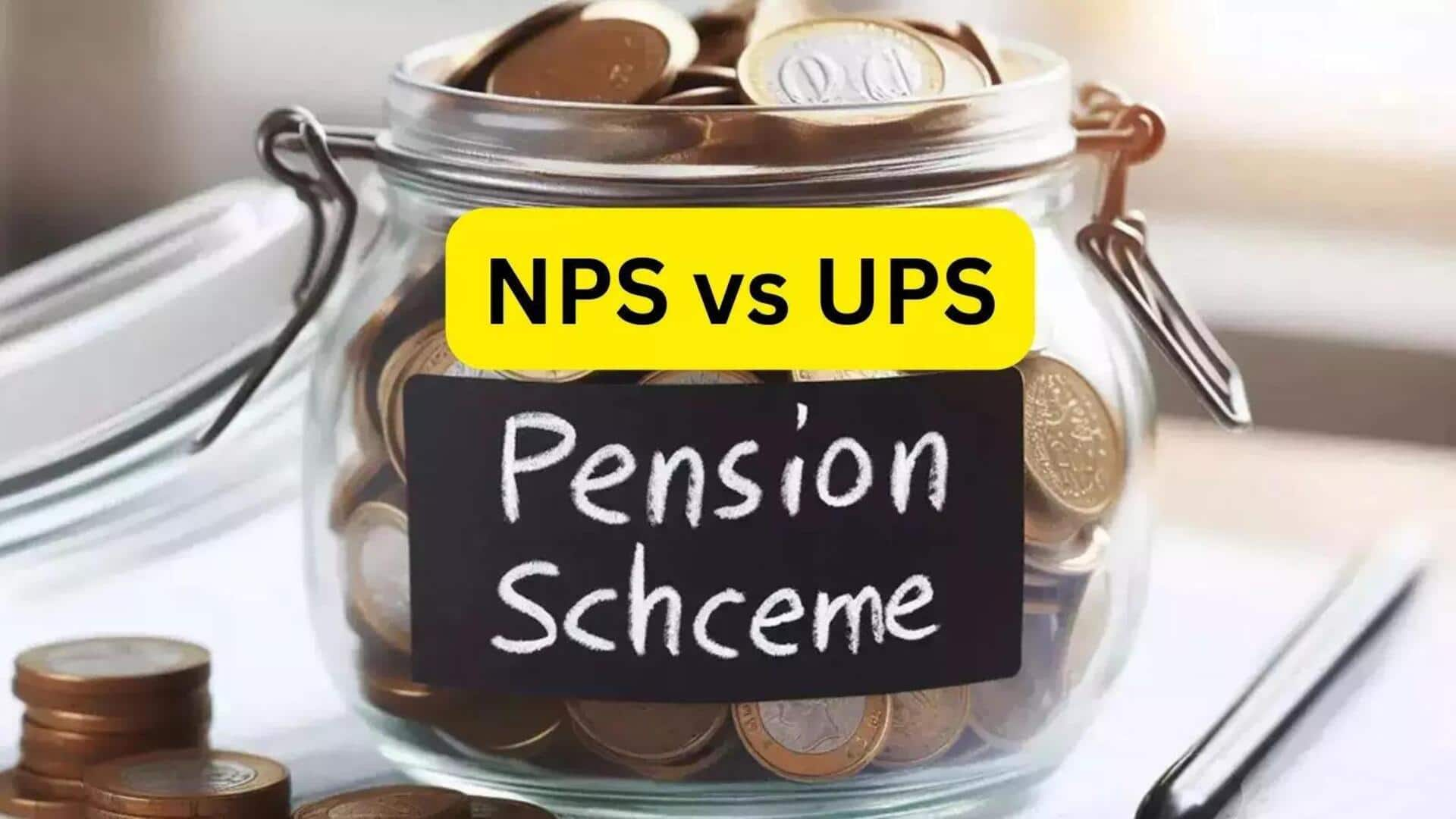
NPS vs UPS: Which pension scheme is better for you?
What's the story
The Indian government has introduced the Unified Pension Scheme (UPS) to address the concerns of government employees seeking a guaranteed post-retirement income. The scheme, launched on August 24, is available only to current subscribers of the New Pension Scheme (NPS), including those who have already retired. This has sparked a debate among experts about whether it's beneficial to switch from NPS to UPS.
Pension preferences
NPS, being equity market linked, has potential to grow substantially
The decision to choose between UPS and NPS largely depends on whether an individual prefers equity market returns or a guaranteed income. Dhirendra Kumar, CEO of Value Research, suggests that those who believe in India's growth story and have many years until retirement should stick with NPS for equity market returns. He further states that for those with at least 10-20 years left in government service, their NPS has the potential to grow substantially.
Income assurance
UPS's guaranteed income attracts government employees
Suresh Sadagopan, a SEBI-registered investment adviser and CEO of Ladder7 Wealth Planners, highlights the allure of guaranteed income in UPS. The pension amount is typically calculated as 50% of the last drawn salary. Sadagopan suggests that eligible NPS subscribers may consider switching to UPS to ensure their basic post-retirement lifestyle needs are met. For additional financial goals, they can create a separate equity investment plan.
Pension schemes
UPS vs OPS: Understanding the differences
Unlike the Old Pension Scheme (OPS), UPS is a fully-funded scheme where employees contribute 10% of their basic pay plus dearness allowance. The central government's contribution has increased to 18.5% from 14% under NPS. In contrast, under OPS, employees did not contribute toward the fund but did contribute to the General Provident Fund (GPF). This amount, along with interest, was reimbursed at retirement time with a defined pension income based on the last drawn salary.
Risk reduction
UPS reduces interest rate and longevity risk
Preeti Chandrashekhar of Mercer Consulting notes that an inflation-linked scheme like UPS reduces the interest rate and longevity risk for employees as these are now borne by the government. However, she warns that since UPS is a mix of defined benefit and defined contribution scheme, careful management of the corpus is essential. Both the central government (employer) and employee contribute toward this corpus with 8.5% of the government's contribution going into a separate fund called 'the guarantee reserve fund.'
Reserve fund
UPS's guarantee reserve fund: A safety net
Chandrashekhar explains that the guarantee reserve fund will be used to cover any shortfall in meeting commitments, emphasizing the need for careful corpus management. She stresses on strong governance around investment of funds, especially the guaranteed reserve fund, to ensure sustainability of the scheme without additional burden on government. As per her, given long-term nature of pension liabilities and increase in longevity, this needs regular monitoring.
Management uncertainty
Who will manage the UPS?
The government has not yet clarified who will manage UPS. However, experts like Kumar and Sumit Shukla, CEO of Axis Pension, suggest that it might fall under the Pension Fund Regulatory Authority of India (PFRDA). "We are still awaiting details, but it does seem like this will be enabled within NPS architecture. Hopefully, corpus for government employees will continue to be managed by NPS fund managers," says Shukla.
Taxation
Tax implications of UPS are yet to be clarified
The tax implications of UPS are still unclear, but experts suggest that pension income will be taxed at income-tax rates. Under NPS, pensioners receive 60% of their accumulated corpus as a lump sum at retirement time, which is entirely tax-free. The remaining 40% is compulsorily invested in an annuity product and the pensioner then gets a monthly pension, which is taxed per their income-tax rates.